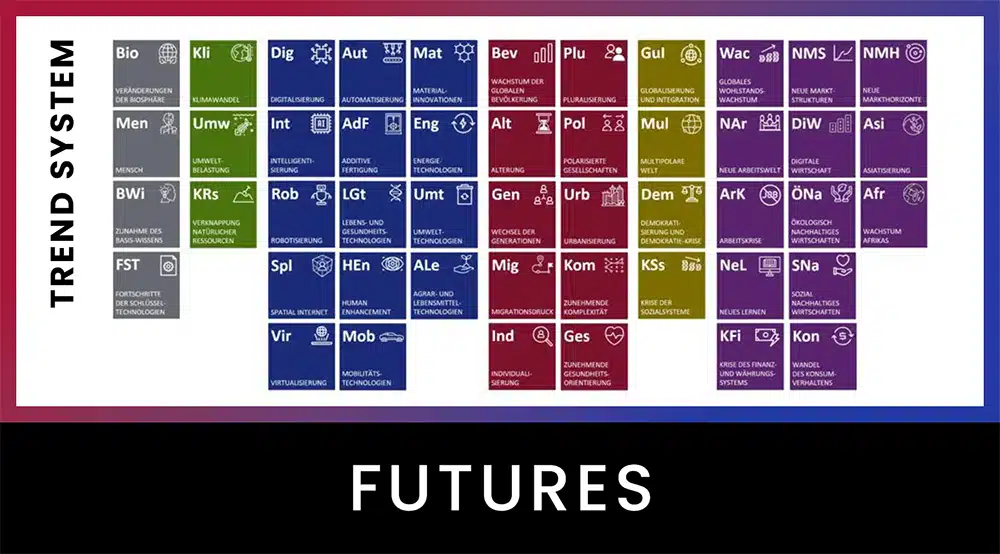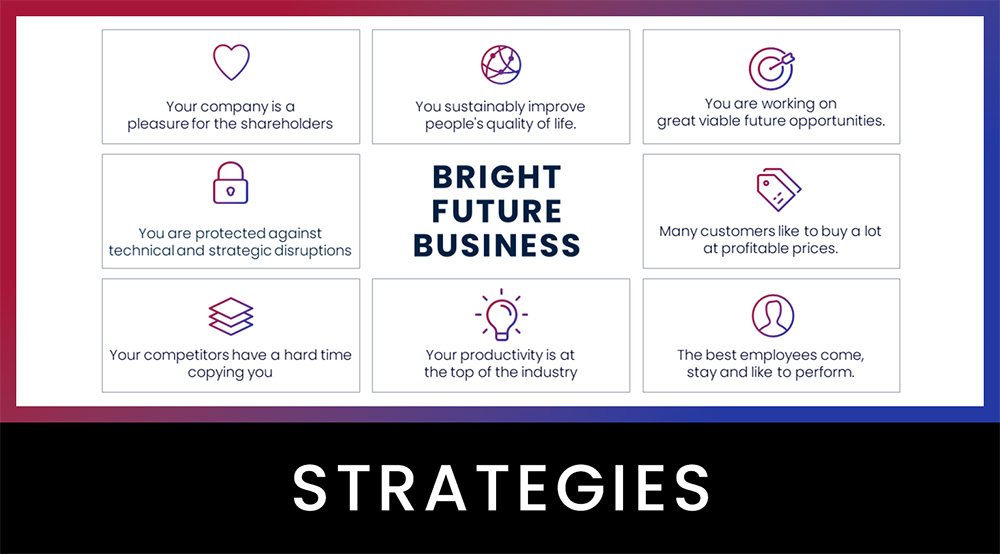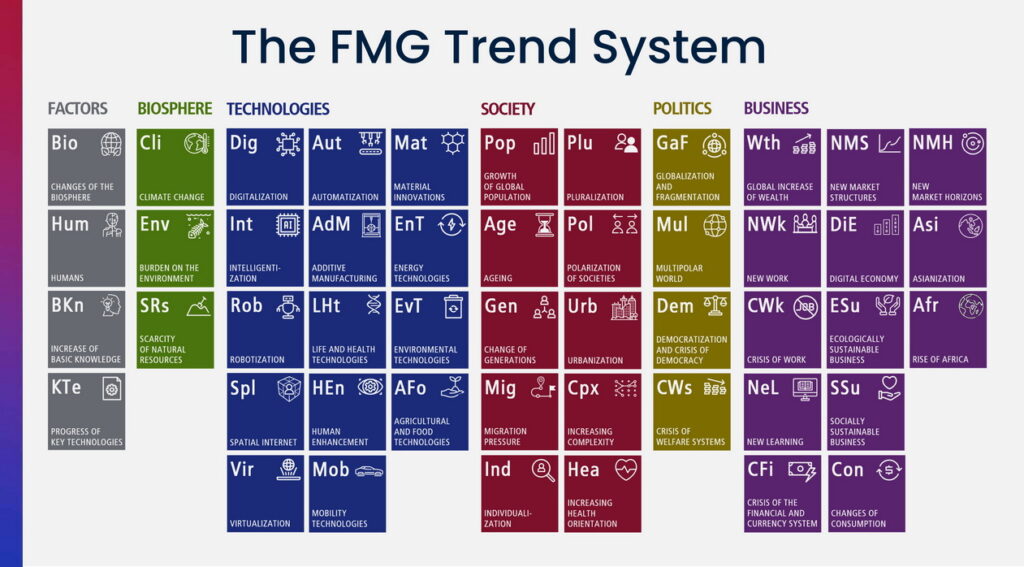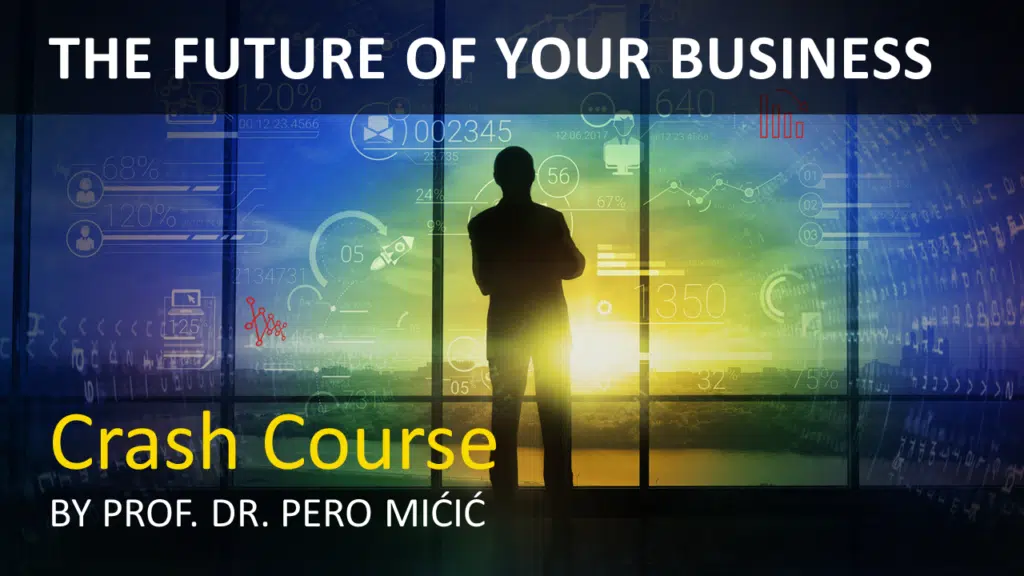Dr. Pero Mićić
You’ve come to the right place if you want to future-proof your business and yourself professionally. Part of my job is to give presentations. At trade conferences, customer events and employee events. When I talk about new markets and new jobs, after the keynote someone always says: “Tell me about all the future markets you presented there, some of them aren’t future at all, they already exist.” There’s a thinking error behind that. You’ve probably heard of the S-curve …
The iPhone did not have the first touchscreen. Tesla didn’t build the first electric cars. And not the first robots. It wasn’t Amazon, Google or Facebook that used the first artificial intelligence. Amazon wasn’t the first online retailer. Google not the first search engine. Facebook not the first social network. Salesforce wasn’t the first software-as-a-service. AirBnB didn’t invent the platform business. “Times will come when our descendants will wonder that we did not know such revelations.” Seneca proclaimed 2,000 years ago. American science fiction writer William Gibson put it this way: “The future is already here, just not yet evenly distributed.”
What does that mean for you? Right now, right now, somewhere there are ideas and innovations that will revolutionize your business and your job.
Do you remember, if you are not so young anymore, when you were in train stations and airports in 1990? What percentage of travelers carried their luggage and how many had wheels under their suitcases? The usual answer is that just about all travelers carried their luggage. And that ten, fifteen years later it was exactly the opposite. Hardly anyone carries luggage that weighs more than five kilograms anymore. When was the wheel invented? Or the wheelbarrow? Even such a simple and obvious innovation as suitcases with wheels take many decades from the time of its invention to its widespread use. The first mention of suitcases with wheels is in 1850 in the “Manual for Foot Travelers”, in the form of bolt-on wheels. In 1970, Bernard Sadow, manager of a suitcase factory in the USA, filed a patent application for the design of a rolling suitcase called Rolling Luggage. Delsey claims to have launched the first suitcase with built-in wheels in 19721. It was not until 1991 that pilot Robert Plath finally made his breakthrough with his pilot case with wheels.
Neomania
Most people believe that the future is always made of what is completely reinvented. They always want to see the new, hear about the brand new trends and new visions. This is called neomania, the addiction to the new. That’s not the future, it already exists, they shout. But no. Our work is not entertainment through spectacular science fiction. It is about real companies, professions and future strategies. To believe that only the completely new is really the future is simply naive.
Right now, at this point in time, there is far more that is new and fascinating in this world than any one of us knows. An almost inexhaustible universe of ideas and innovations lies out there, just beyond our perceptual limits. When you perceive something as new, very often it has actually existed for a very long time and has only now come from outside to inside your perceptual boundaries. Assume that in any given year, only a few percent will be truly new to the world, but a great deal more will simply become more familiar and we will then perceive it as new.
The S-curve
You’ve probably heard of the S-curve. Ideas and innovations often exist for years, decades and centuries before they are finally adopted by people and spread into the real world. There are thousands of examples of this.
The future is mostly already here
- 400 BC: First “robot” in the form of the flying dove of Archytas by Archytas of Taranto.
- 60 AD: Heron of Alexandria describes the first coin vending machine. For holy water.
- 1837: Development of the fuel cell by Christian Friedrich Schönbein. They are being applied in several waves, with the big breakthrough still to come.
- 1839: Discovery of the photoelectric effect as the basis of photovoltaics (solar cells) by Alexandre Edmond Becquerel.
- 1860s: First nutritional concepts based on the “low carb” principle, which have only been so well-known and popular for about twenty years.
- 1839 approx.: Scotsman Robert Anderson builds the first electric car.
- 1899: The first electric car named “La Jamais Contente” travels at 100 kilometers per hour. Tesla has only been driving the global shift to electric propulsion since 2012.
- 1896: Armstrong builds the first hybrid drive, 1900 Ferdinand Porsche builds one in Vienna. It was not until 1997 that it became a success with the Toyota Prius.
- 1918: First radio telephones at the Deutsche Reichsbahn in Berlin. More than 70 years later, it started to become a big market.
- 1920s: First vegetarian restaurants and health clubs. Both business areas did not blossom until decades later.
- 1925: The first prototype of a self-driving, more precisely remote-controlled car is presented.
- 1925: Idea of the Youth Bank as a “Childrens Window” by the Mission Savings Bank in Los Angeles.
- 1936: Operation of the first videophone between Berlin and Leipzig. It wasn’t until Skype, and later Zoom and Teams, that videophony became commonplace.
- 1938: Westinghouse introduces the first robot of the modern era. Only now are Boston Dynamics and soon Tesla and others bringing real humanoid robots.
- 1956: The first conference on artificial intelligence is held. The agenda includes “neural networks”. Only recently it started to become relevant for everyone.
- 1970s: First weblogs are published (Internet diaries). Thirty years later it became a hobby and business.
- 1970s: First touch screens at CERN and Telefunken. It wasn’t until the iPhone 30 years later that the big wave of touchscreens arrived.
- 1981: First navigation system in a Honda passenger car. It took twenty years for the gradual spread to begin.
- 1989: Grid systems launches the GRIDPad, the first tablet computer, 21 years after the idea was shown in the movie 2001 Odyssey in Space. After that, HP, Nokia, IBM, Sony, Microsoft all brought tablet computers. And yet it was only the iPad that made it a success from 2010 onwards. It is not a matter of inventing the completely new at a very early stage, but of doing it right and in good time.
- 1982: Introduction of the Internet standard TCP/IP and the name Internet
It can take even longer if only the idea exists, but not a prototype. The first ideas for an innovation sometimes exist centuries before a first prototype.
- 1894: Idea of the Walkman by Octave Uzanne in The End of Books2
- 1266: (Roger Bacon) “Wagons are producible which are not pulled by any animal. And yet they will move forward with unimaginable force. Flying devices can also be constructed. And in such a way that a human being sits in it, rotating a machine (…). And facilities will be created to roam in the sea or rivers down to the bottom and without danger to life.”
- 800: “When iron birds fly through the air, Buddhism will migrate westward and come to the farthest lands.” (a Buddhist monk)
I could go on like this forever. Little of what passes for new each year is actually new. So your future is already here. Therefore, when you are looking for ideas and opportunities for your business and for your profession, you should look much more at what already exists, but what you have not yet noticed. Most people have no idea what is already out there today, and some of it has been around for a very long time.
An estimated 95% of what will be practically relevant for your business and profession in the next few years will be ideas and things that already exist today, but that you just don’t know about or whose potential you haven’t yet recognized. The future is predominantly not invention, but diffusion, i.e. the spread of ideas.
The future is usually already there – but often only at the beginning of the S-curve.
So: don’t fall prey to neomania. The future is usually already here. What ideas, innovations and prototypes have others already developed that you can take up, think about further, concretize and make practically usable? Which you can use in your particular business and profession to create better, more enjoyable, and less expensive solutions for your customers’ problems and desires. And to differentiate yourself from your competitors. After all, that’s why professionals systematically scan the startup world and discover opportunities they simply didn’t think of themselves.
No, I am not saying that you should copy others. I find this less than honorable and also less than motivating. I say that you should be inspired in a very simple and practical way to think it further, to think it through to the end and then so create the new in your business and your profession. Of course, you can also try to invent something unprecedented. But you don’t have to. It’s also usually too expensive and it takes too long. It is not the best way. That’s why I say: Your future is already there, you just haven’t recognized it yet. Expand your perceptual boundaries. Look into other markets, other disciplines, other areas of expertise. The space of your future opportunities and the number of your future opportunities is infinite.
By the way, if you want to find new future opportunities for your company with system and method, we can talk about how we can do that together. It unlocks enormous potential, it’s fairly easy, it’s fun, and it’s doable and fundable for small businesses. It can take your business into a whole new successful era. That has been my mission and our mission for 30 years.
Placeholder
Please also follow these links:
► Free video crash course THE FUTURE OF YOUR BUSINESS
► BUSINESS WARGAMING for robust business and future opportunities
► LECTURES AND KEYNOTES by Pero Mićić for your employees and customers
Placeholder
I wish you a bright future!
Have a bright future!
Placeholder
Placeholder


































